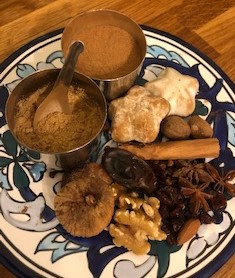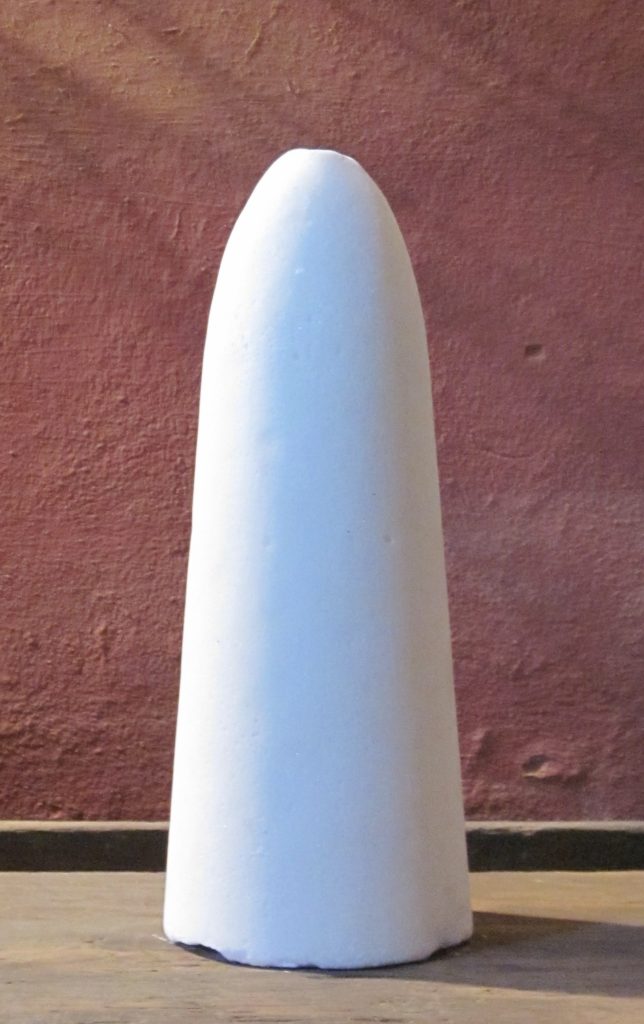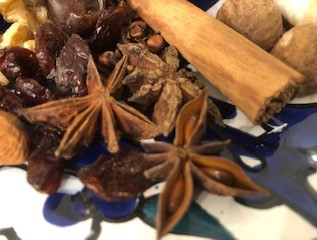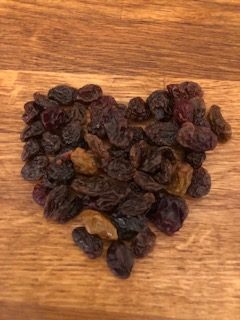
Image: Karen Costello-McFeat
What is Christmas without the glorious flavours of sugar, spice and exotic dried fruits? Almost all our traditional cakes and treats contain them: marzipan, fruit cake, pies and candies. Yet, the very things that fill our trollies and cupboards at this time of the year, were once the preserve of the seriously rich. We feast like the emperors of old.
Though I knew that sugar and spices were always valuable, I only had the haziest conception of their histories. So I thought a little investigating might be in order. If nothing else, this post might help as a conversation starter over the mince pies.
Sugar
This most ubiquitous of ingredients was once so precious that it was stored in its own safe ( The Sugar Association). Though humans have been chewing sugar cane from earliest times, it was first refined in India around 100AD. Sugar was originally used as a medicine, then as a sweetener.
As it became more widely available, consumption grew exponentially. Unfortunately, this meant that even more slaves, from the Canary Islands to Cuba, were required to grow it. Some of those opposed to slavery boycotted the product, choosing the more ethically sourced maple syrup instead.

With slavery becoming (thankfully) obsolete in the Caribbean in the early 19th century, European producers turned to an alternative source of sweetener in sugar beet. Discovered by Andreas Marggraff in 1747 and made commercially viable by his student, Franz Achard, Europe acquired a sugar it could produce close to home. (Saveur.com)
In the UK, sugar beet is farmed in East Anglia and if you want to know more about its production, here’s the link: https://www.silverspoon.co.uk/field-to-spoon If you are looking for a fair trade and environmentally sustainable product, sugar derived from sugar beet is it.
Rather ironically, sugar has moved from a sought after medicine to a health hazard. But if we remember its original worth and use it sparingly, we will be able to have our cake and eat it too!
Spice
There are so many essential Christmas spices that it is difficult to choose just one. However, if I could only have a single spice, it would have to be cinnamon. This warm, subtle flavour enriches everything from Christmas cake to mulled wine. Uncooked, the quills make a great decoration – powdered and sprinkled onto food, it adds a certain je ne sais quoi!
Cinnamon is harvested from the bark of the Cinnamomum tree or if you want a more fancy product, from the trunk itself. Sticks of cinnamon add a spicy punch to fruits and beverages, whilst the more economical powder is an essential baking ingredient. Though, as I have just discovered, it is used across the globe in savoury dishes too. Something new to try.
Unlike sugar, cinnamon can be used without a twinge of guilt. Quite the opposite, in fact. Cinnamon is positively medicinal: possessing antimicrobial, antifungal and anti-oxidant qualities. Although, sadly, claims that it helps you lose weight are unsubstantiated (MasterClass).

Cinnamon is produced right across South East Asia with ‘true’ cinnamon coming from Ceylon. Each of the four types of culinary cinnamon available have their own distinctive flavours, so if you really want to know this spice, try each of them and find the one you prefer.
As I was doing a little more research on the topic, I came across a great tip from The Tasting Table. If you want your home to smell extra Christmassy, boil some cinnamon sticks in your kitchen. Personally, I think I would add some apple juice, cloves and star anise. That way I can enjoy both the flavour and the scent.
All things nice …
The final part of the Christmas food triumvirate is dried fruits. Where would our festive cakes be without raisins, sultanas, and currants? (I would add: figs, dates and apricots, but there is only so much one can write about). In warmer climes where grape vines flourish, their fruits have been dried and stored for millennia. Europeans, however, living in the cooler North, had to wait for the returning Crusaders to bring them home. (They also brought sugar from Jerusalem). The Crusades may have been a military catastrophe, but they proved to be a culinary triumph.

Image: Karen Costello-McFeat
Many people, myself included, are puzzled by the distinction between the three vine fruits, so here’s the explanation.
- Raisins are sourced from a variety of grapes. They are dried for around three weeks, in which time they turn a deep, dark brown.
- Sultanas come from green seedless grapes, are coated in a drying solution and dried for a shorter time – hence their lighter colour.
- Currants are made from small, black , seedless grapes and again dried for three weeks. Of the three, currants tend to pack the most flavour. (Healthline)
Sugar, spice and vine fruits make the most delicious combination. I’ll be planning to introduce them to each other when I make a vegan Christmas cake this weekend. Yes, I know I am rather behind. But a fruit cake, even if it is not ‘well fed’, is still delicious. And if I add to that the knowledge that each and every one of these ingredients would have been prized only a little while ago, I think it will taste even better.
